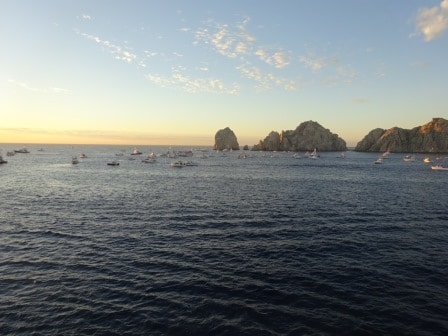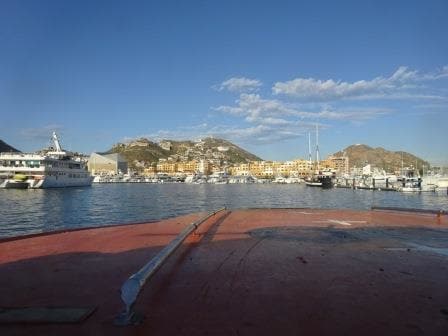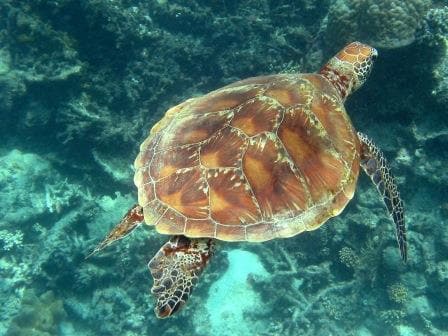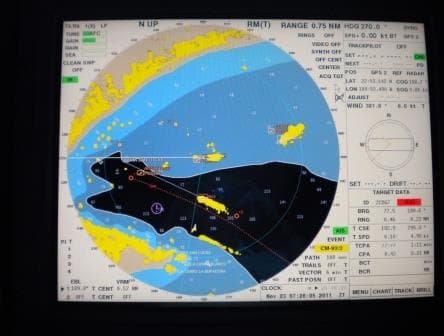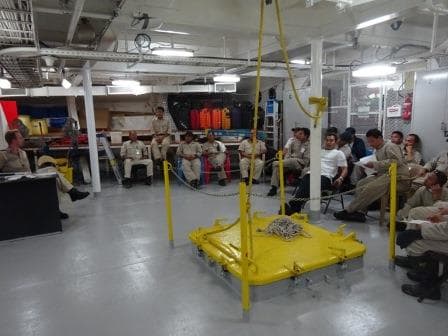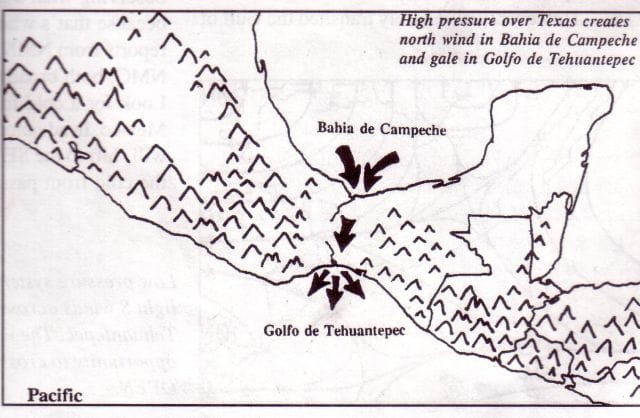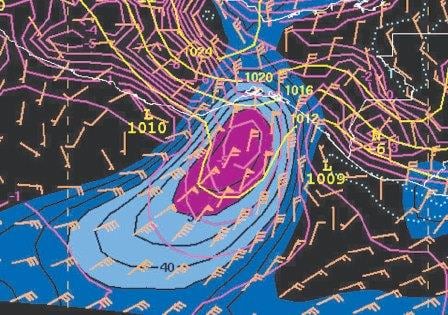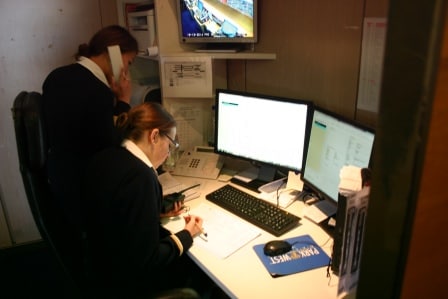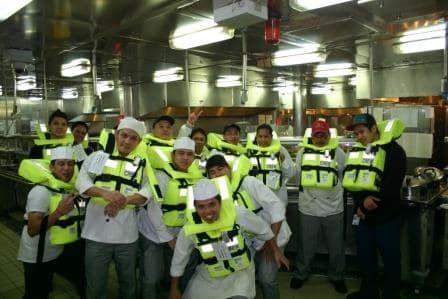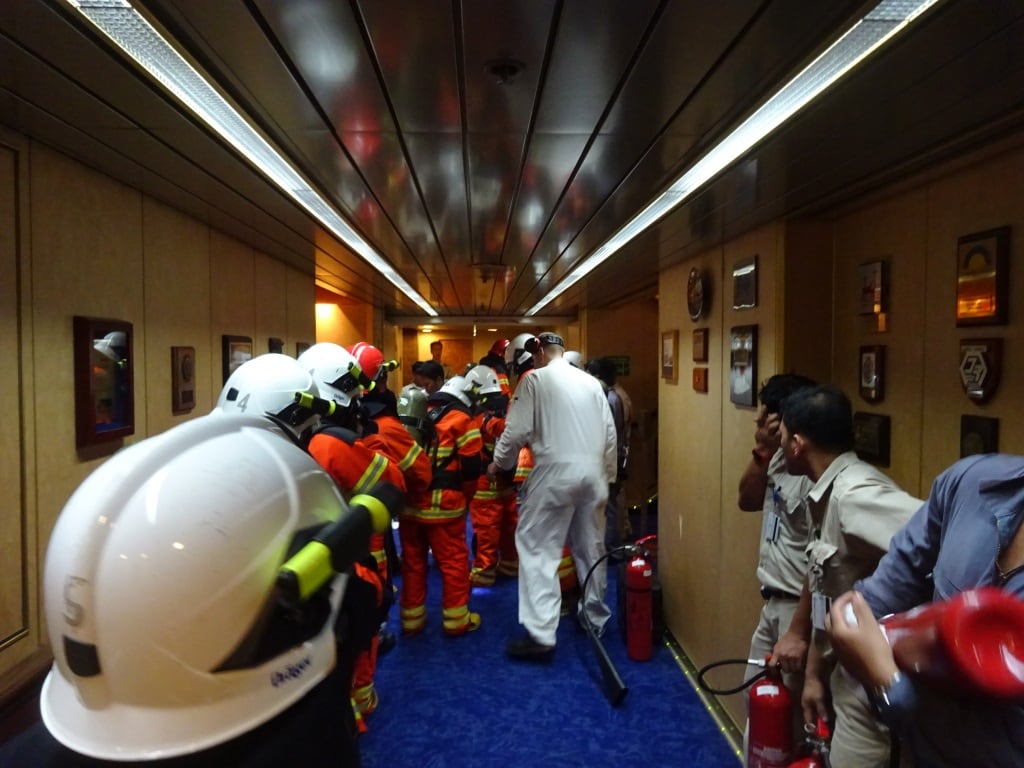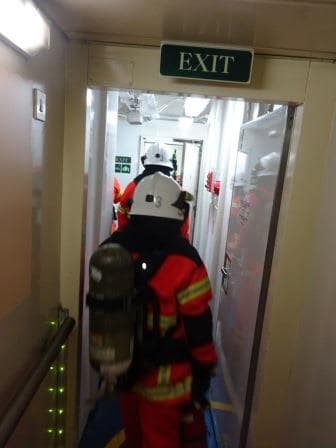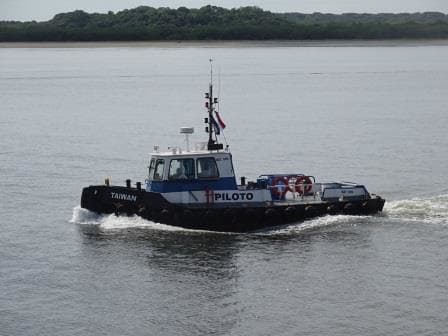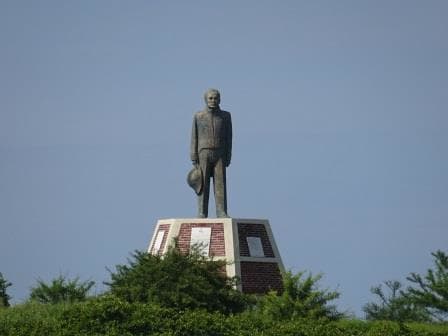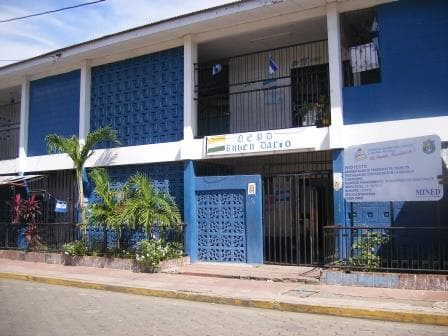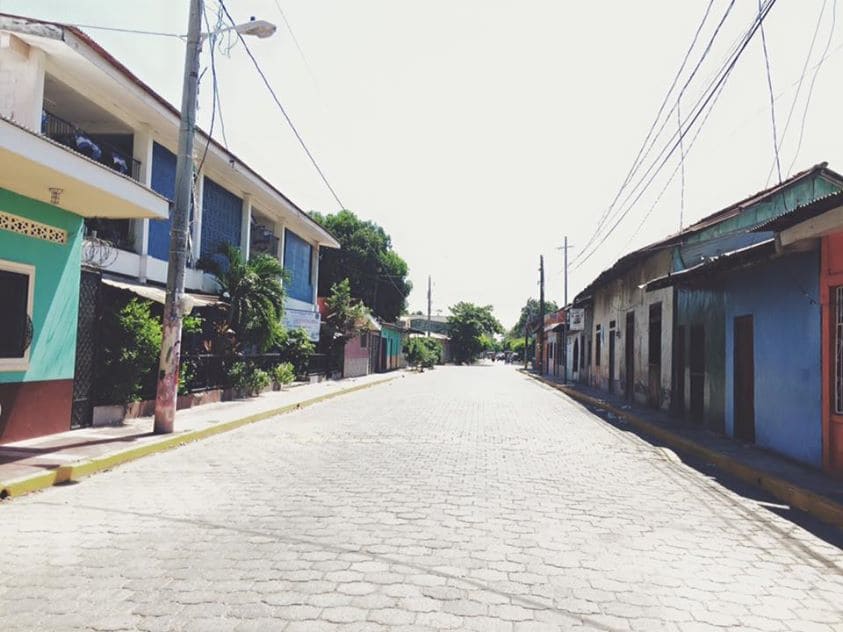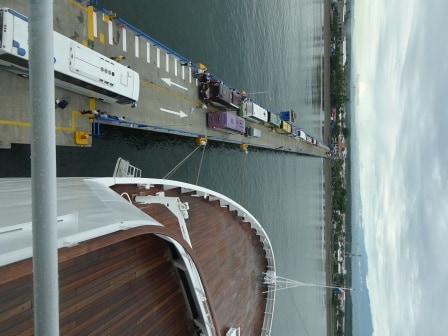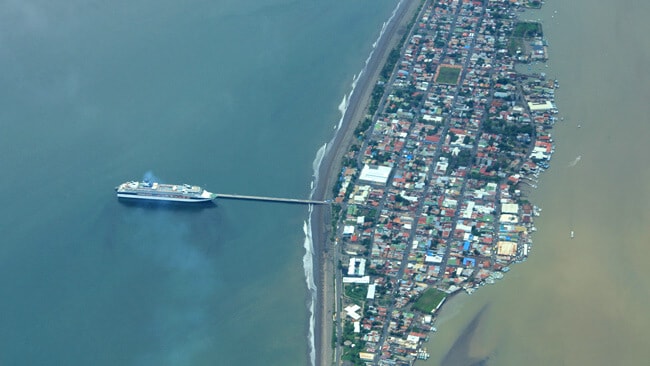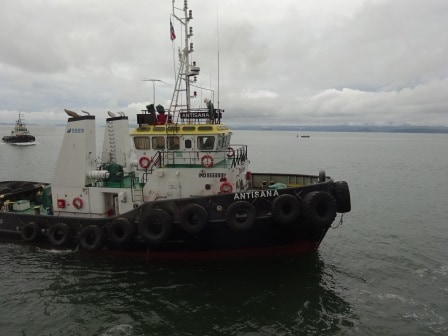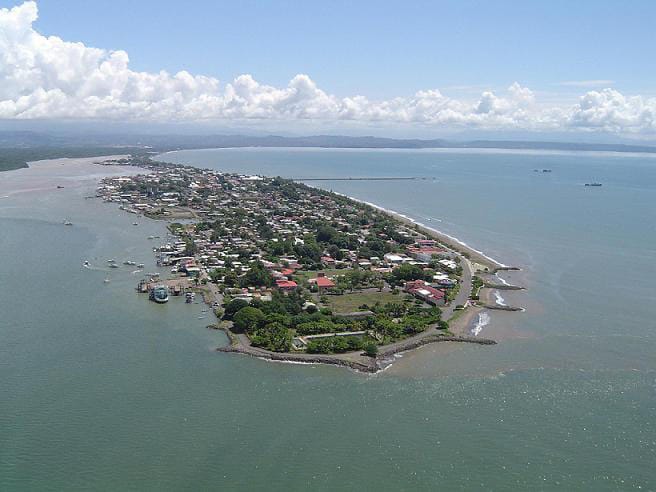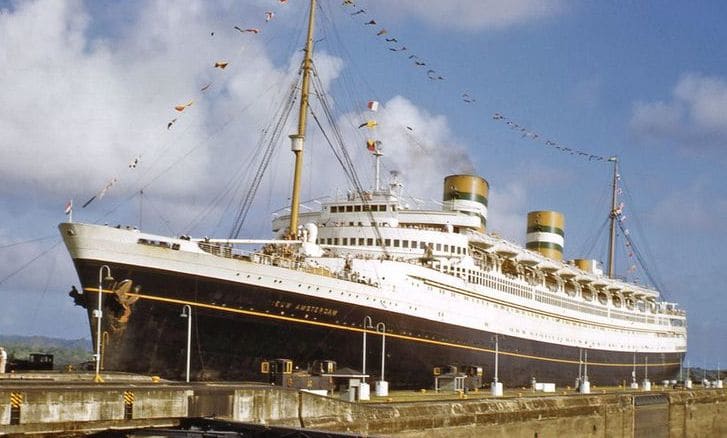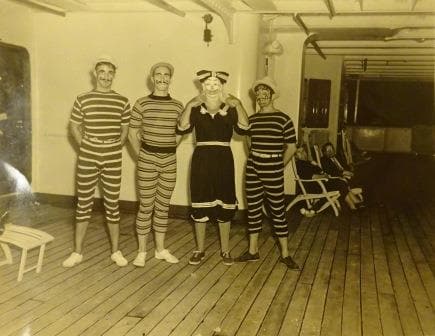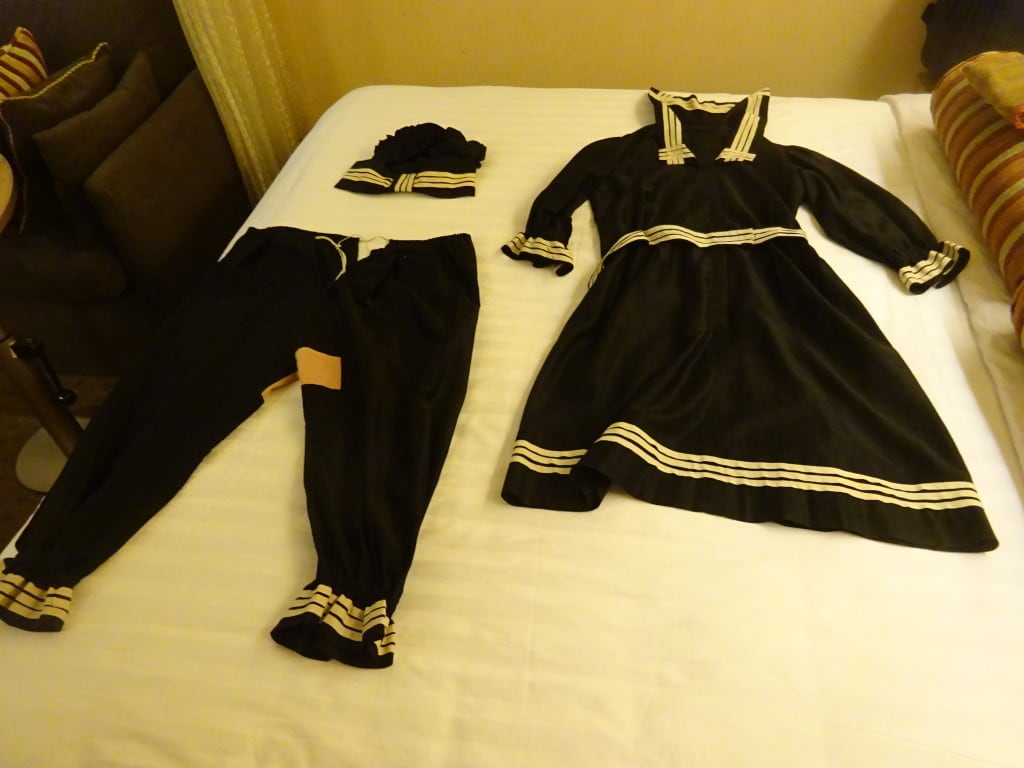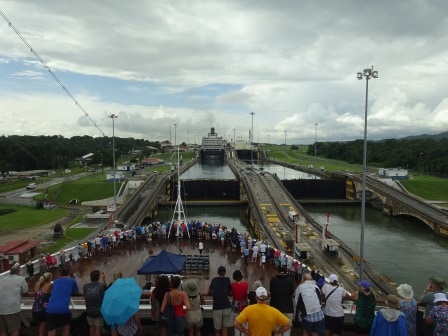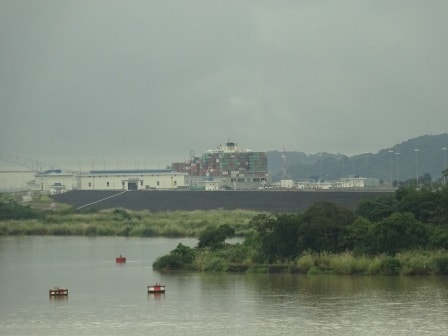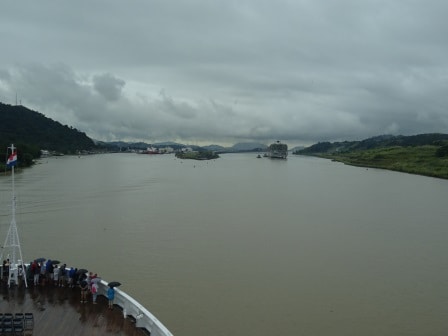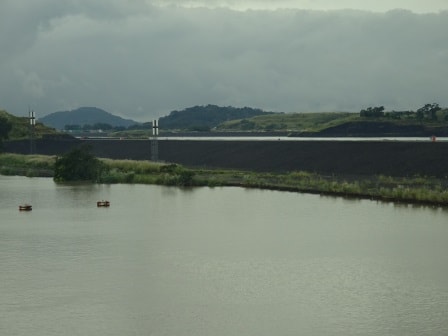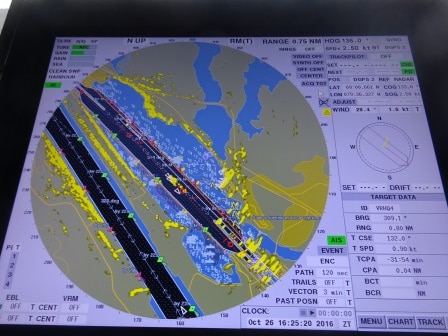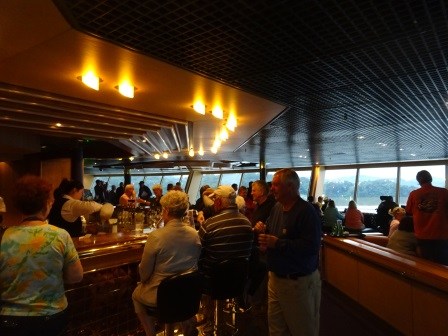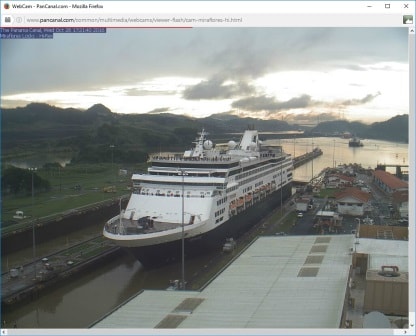USA California has a long coastal line and so has Mexico California; and since 2 pm. yesterday we are sailing along it and can see it continuously on our starboard side. Some of it is fairly flat but in some areas the mountain ranges almost reach the water line and then we see high sand dunes which are really rocks covered with sand. We will continue to follow the coast until we reach San Diego, which is about ten nautical miles north of the Mexican Border. From San Diego it would at least be another day of sailing along the coast to get to the northern boundary, there where California meets Oregon. The Veendam will not do this as San Diego is the turnaround port and from there she goes back to Florida.
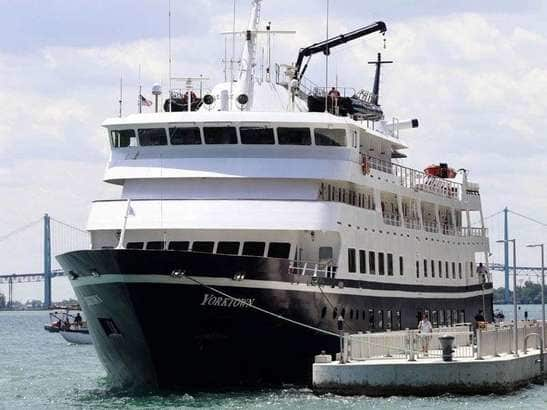
The Yorktown Clipper a number of years ago. I did not have my camera with me, so I could not take open sea shot this morning.
This is really the start of the winter season and thus I was not so amazed to see a little blue hulled cruise ship sailing by which looked like the Spirit of Yorktown. But I was amazed to see that it was her. The latest news I had read about her was that she had been seized by a bank due to some monetary issues but obviously she is back in business. She is one of those little ships who sail in Alaska in the summer and then sail the Gulf of Cortez area in the winter. Specializing in wildlife explorations. (The Gulf of Cortez is the sea area between the Mexican Coast and the Californian Peninsula)
We had a very nice sunset last night and that brings me back to the need to complete my blog of a few days ago about sunrises, sunsets and twilights. For people ashore the twilight zone is the moment between light and dark, the time of sunrise and sunset. For us at sea things are a little bit more complicated as that time of the day is an excellent moment to take celestial fixes to determine the ships position. We now mostly look at the GPS but the old skills are still important as you never know if some politician might switch the system off. (USA, Russia and the EU all have an independent system developed just because of that reason)
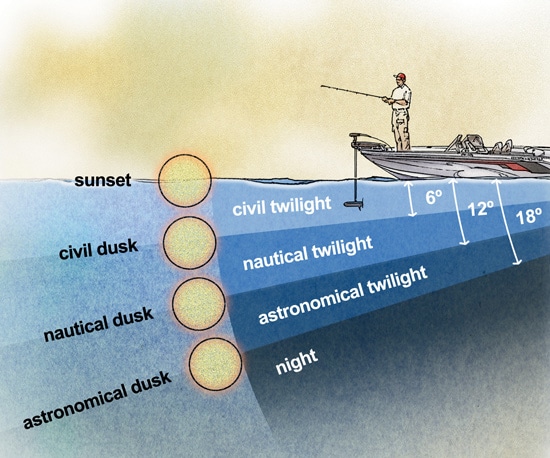
It has nothing to do with fishing but everything with finding out where you are. (Courtesy In-Fisherman)
Twilight is the time of dusk or dawn, when we go from full night to full day or vice versa. The sun is below the horizon but it is not completely dark yet. For the explanation we will use sunset. There are three phases in this period, Civil, Nautical and Astronomical twilight.
Civil Twilight is the period which ends when we humans think: now the sun is really gone. We cannot see terrestrial objects very clear anymore. We can see planets but stars are not very clear. Then comes Nautical Twilight. Now the stars are clearly visible and the horizon is as well. By using a sextant (which measures the angle between a heavenly body and the horizon) we can find our position by obtaining “a fix” of several objects at the same time. 3 observations are enough, 5 or 6 are better. Once the horizon is no longer visible we enter the period of Astronomical Twilight. This is a period when astronomical observations can be made; I am not too familiar with this but as far as I know astronomers need sometimes this period as they cannot do certain observations if it is really night.
Scientists have of course figured about exactly between which angles of the sun, which twilight exists. We at sea do not really care much about those angles. We need the time. We calculate when we can expect nautical twilight and we are already in position with our sextant well before that time so we have the longest period possible to catch those stars and planets which will give us the best fix. So once we can see the horizon or until we lose the horizon we “shoot the stars”. Which is nowadays not so easy anymore as we have closed bridge wings; and thus we have to go to the deck above the bridge and then come down again. Because Navigators are not allowed to leave the bridge, you need other officers to come up and make the observations.
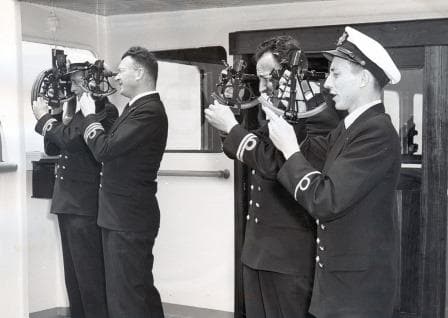
One from the old days. Officers shooting the noon time sun on board the HAL cargo ship ss Arkeldyk in 1950. The officer with the 3 stripes is the later captain H.L. Van Deventer. (Courtesy R. van Devener , son)
Not a bad idea anyway, because by taking multiple sightings, you can improve your final calculation considerably by middling the results and discarding an observation if one is a bit too far out. That was why in the old days all the deck officers would come to the bridge for the”noon time fix”. This is a way to exactly measure your latitude by taking an observation of the sun when it is at its highest point. As the sun is only there for a few seconds, all officers would take a reading and then decide on the correct one. (Most of the time, the one of the most senior officer involved) But that is another story.
Tomorrow we are in San Diego and I will leave the ms Veendam behind, my work being done here. I was Captain on her from 2004 to 2008 and it was good to see her back. From San Diego I will fly via New York and Amsterdam to Malaga and there join the Oosterdam for her Trans-Atlantic crossing and then for cruises from Tampa.
So tomorrow there will be no blog as I will be travelling. Even if I was not, then there would still be no blog as tomorrow I will be 35 years with Holland America Line, so I would have raised a glass to myself in the best Bar on the ship. Now I will find one in an airport .Cheers.
